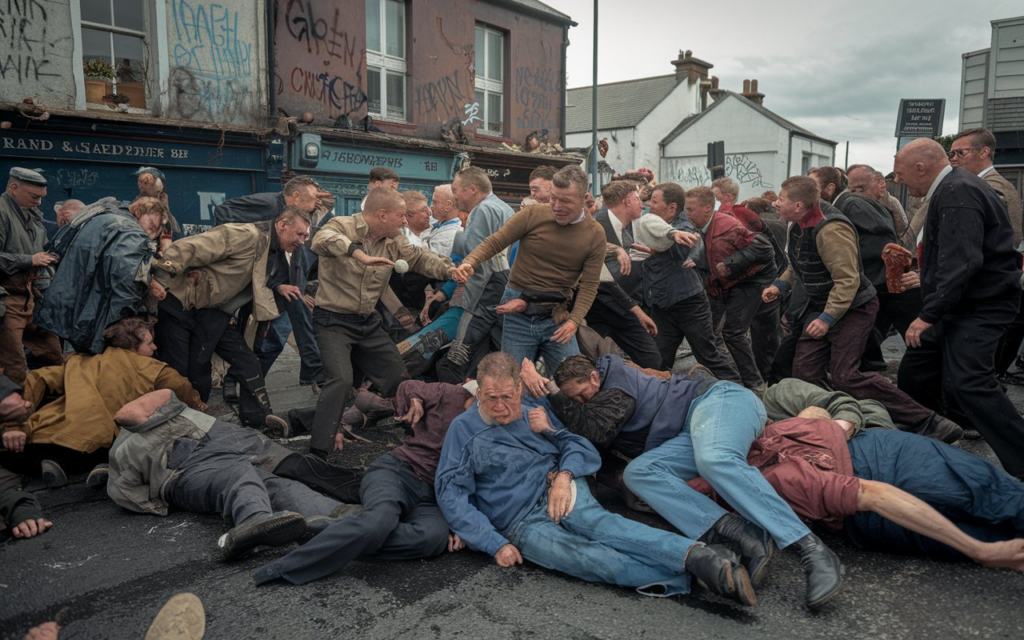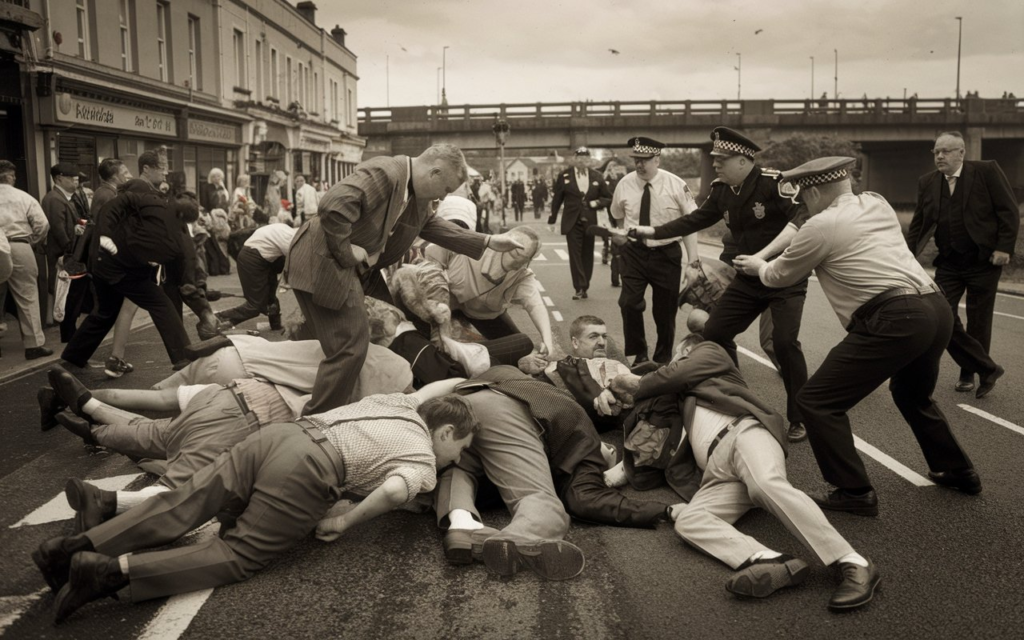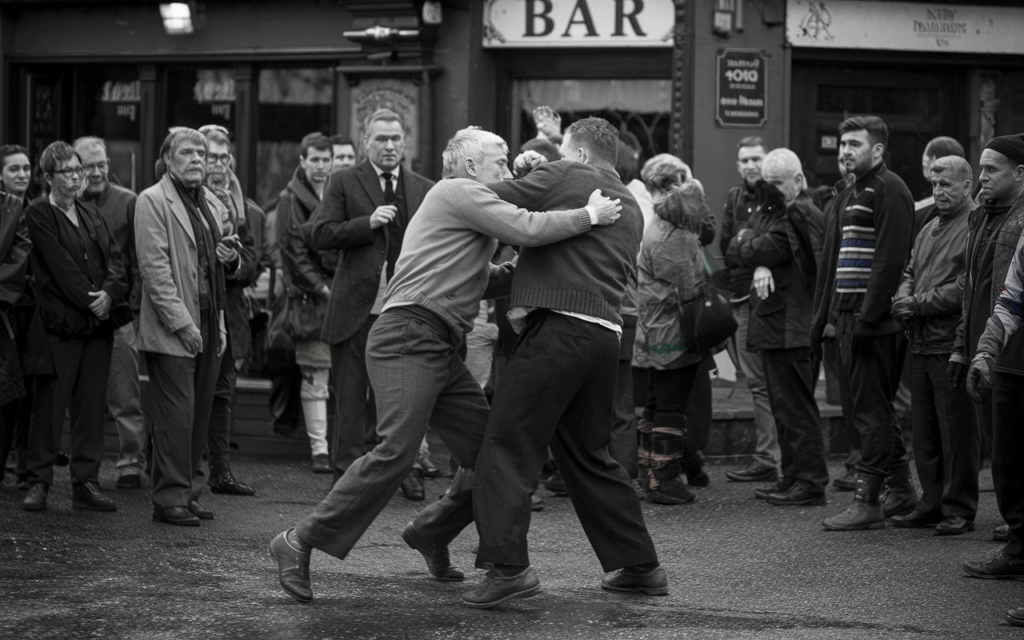Introduction
In the annals of Irish history, certain events resonate for their historical significance and portrayal of broader societal dynamics. One such event is the Ballyshannon Traveller fight of 1985. This confrontation, rooted in the rich tapestry of Irish Traveller culture and the socio-political landscape of the time, has left an indelible mark on the community and the history of Ireland. This article delves into the events of 1985, exploring the social context, the specifics of the confrontation, and its long-term implications on the Traveller community and Irish society.
Before delving into the specifics of the Ballyshannon Traveller fight, it’s crucial to understand the Traveller community in Ireland. Travelers, also known as Gypsies or Romani people, have a distinct cultural identity marked by a nomadic lifestyle, unique traditions, and a strong sense of community. Historically, Travellers have faced marginalization and discrimination, which has shaped their social interactions and relationships with settled communities.
The 1985 incident cannot be viewed in isolation; it must be understood against the backdrop of Ireland’s social and political climate. Despite its rich cultural heritage, the Traveller community was often at odds with the settled population due to differences in lifestyle and social norms. This tension frequently manifested in conflicts and disputes, some gaining significant media attention.

The Social and Political Context of 1985
In the mid-1980s, Ireland was undergoing significant social and political changes. The country struggled with economic challenges, including high unemployment and social inequality. The Traveller community, already marginalized, faced increased scrutiny and prejudice as societal tensions heightened.
During this period, the Irish government began implementing various measures to improve Travellers’ conditions, including housing initiatives and social services. However, these efforts were met with mixed results and often failed to address the root causes of systemic discrimination. The 1985 Traveller fight in Ballyshannon can be seen as a reflection of these underlying social tensions.
The Ballyshannon Traveller Fight: An Overview
The Ballyshannon Traveller fight in 1985 was a significant and violent confrontation in the small town of Ballyshannon, County Donegal. The incident involved members of the Traveller community and the settled population, escalating into a more significant conflict that drew widespread attention.
The Lead-Up to the Conflict
The origins of the Ballyshannon fight can be traced to ongoing disputes between Travellers and residents. Tensions had been brewing for some time, exacerbated by economic hardship and differing lifestyles. Incidents of theft, vandalism, and altercations between Travellers and locals had created an atmosphere of hostility.
These tensions reached a boiling point in the weeks leading up to the fight. There were reports of aggressive encounters and escalating violence, contributing to a sense of imminent conflict. The situation was further inflamed by local media coverage, which often sensationalized the issues and fueled public outrage.

The Fight Itself
On the day of the Ballyshannon Traveller fight, violence erupted between the Travellers and settled residents. Physical altercations, property damage, and a general breakdown of order in the town marked the confrontation. The fight involved a large number of participants from both sides, and the violence was reportedly intense.
Local authorities were called to the scene, but the conflict’s scale and chaotic nature limited their response. The fight lasted for several hours and resulted in numerous injuries, property damage, and arrests. The aftermath of the battle left the town of Ballyshannon in a state of shock and disarray.
The Aftermath and Impact
The aftermath of the Ballyshannon Traveller fight significantly affected the Traveller community and the local population. The immediate impact included physical injuries, property damage, and heightened tensions between Travellers and settled residents.
Community Relations
The conflict deepened the rift between the Traveller community and the settled population. Both sides blamed each other for the violence, and mistrust and hatred increased. This divide was further exacerbated by media portrayals that often painted Travellers negatively.
Responding to the conflict, various quarters called for greater dialogue and understanding between the Traveller community and the settled population. However, entrenched prejudices and historical grievances made it challenging to achieve meaningful reconciliation.

Legal and Political Repercussions
The legal and political aftermath of the Ballyshannon Traveller fight included investigations, arrests, and legal proceedings. Some individuals were charged with offenses related to violence, but the broader issues of discrimination and marginalization were not fully addressed.
Politically, the incident drew attention to the need for more comprehensive policies and initiatives to address the challenges faced by the Traveller community. While there were calls for reform, progress was slow, and the underlying issues remained largely unresolved.
The Legacy of the Ballyshannon Traveller Fight
The legacy of the Ballyshannon Traveller fight extends beyond the immediate aftermath of the confrontation. It serves as a stark reminder of the complex and often fraught relationship between Travellers and settled communities in Ireland. The incident highlighted the need for greater understanding and empathy, as well as the importance of addressing systemic issues of discrimination and marginalization.
Changes in Policy and Attitudes
In the years following the fight, efforts were made to improve the conditions of Travellers and address some of the underlying issues. Government policies and initiatives aimed at improving housing, education, and social services for Travellers were introduced, but challenges remained.
Public attitudes towards Travellers also began to shift, albeit gradually. Increased awareness and advocacy efforts helped to challenge stereotypes and promote a more nuanced understanding of Traveller culture. However, prejudice and discrimination persisted, and the journey towards genuine equality and integration continued.
Reflections and Lessons
The Ballyshannon Traveller Fight is a case study of the complexities of community relations and the impact of socioeconomic factors on conflict. It underscores the importance of addressing underlying issues and fostering dialogue between groups. The lessons learned from this incident highlight the need for ongoing efforts to build bridges and promote social cohesion.
Conclusion
The 1985 Ballyshannon Traveller fight remains a significant and poignant event in Ireland’s history. It reflects the broader social and political dynamics of the time and serves as a reminder of the challenges marginalized communities face. Understanding the context and impact of this confrontation provides valuable insights into the complexities of community relations and the importance of addressing issues of discrimination and inequality.
As Ireland continues to evolve, the lessons from the Ballyshannon Traveller fight offer essential reflections on the need for empathy, dialogue, and ongoing efforts to build a more inclusive and equitable society. While this event’s legacy is marked by conflict and tension, it also highlights the potential for growth and understanding in the face of adversity.


